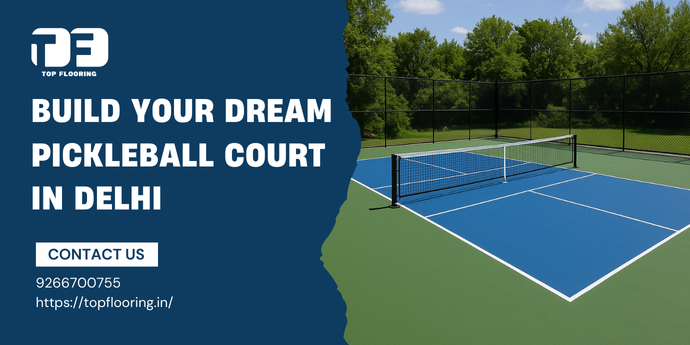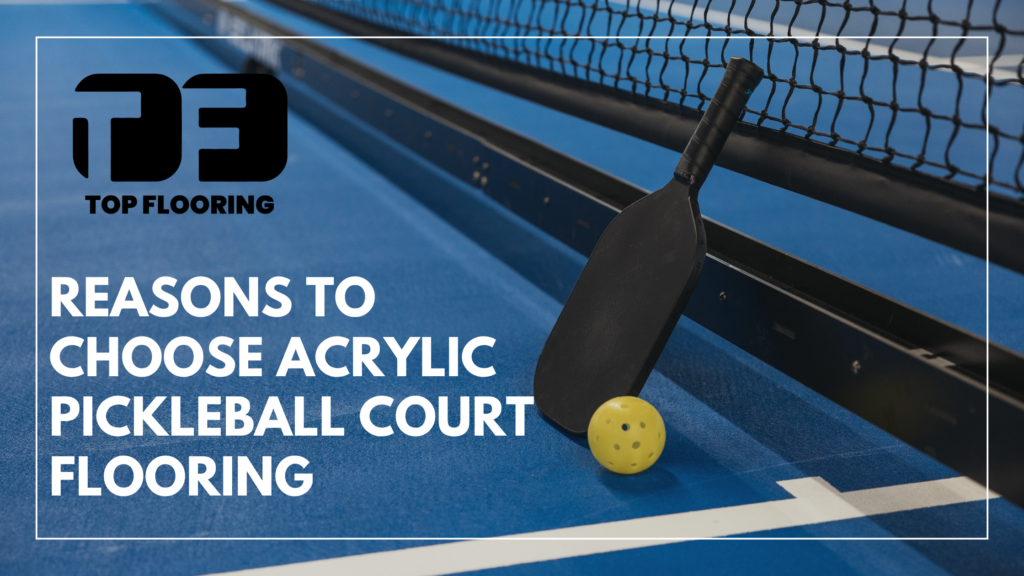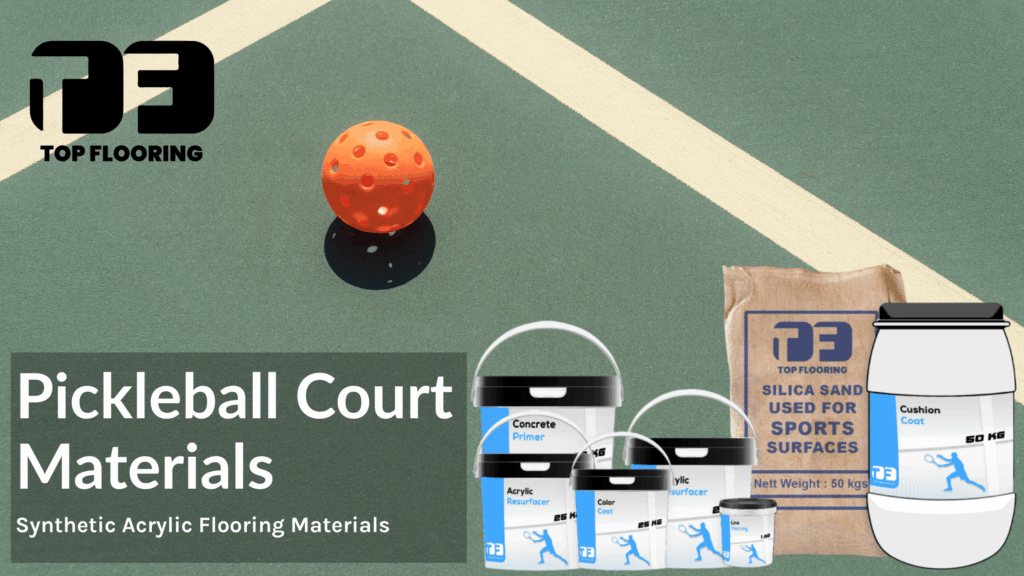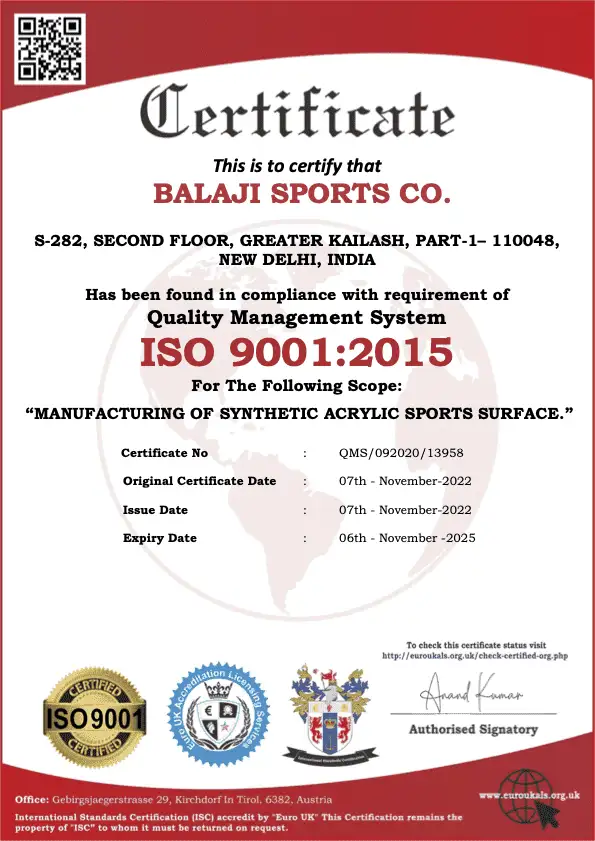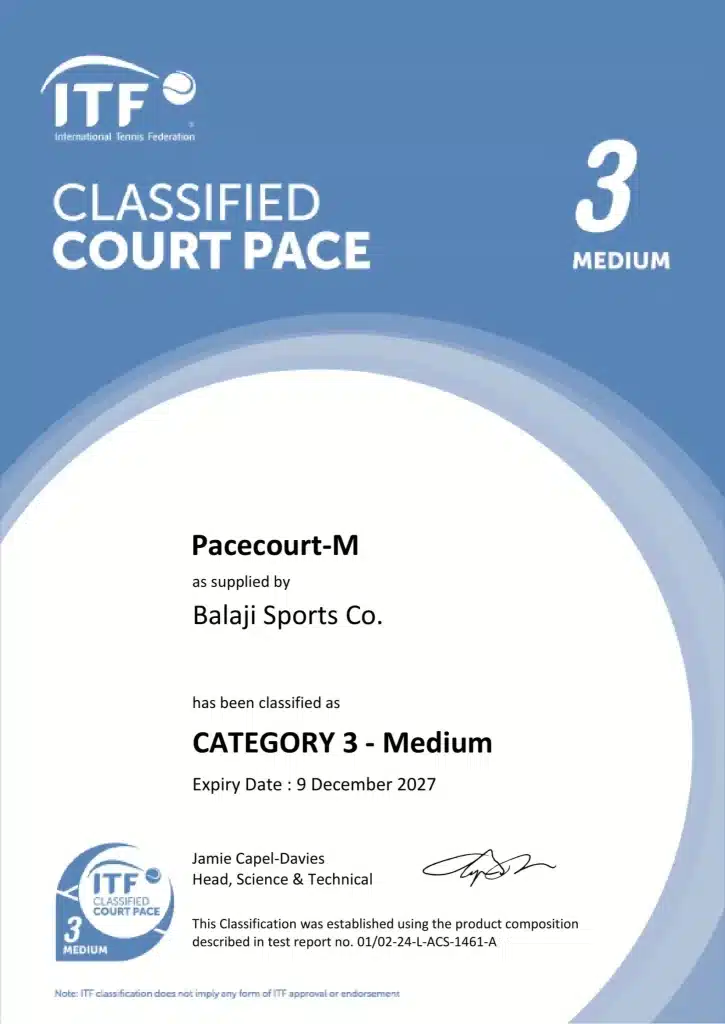Pickleball is no longer just a backyard game, it has become one of the fastest growing sports in India and pickleball court flooring in Delhi is at the heart of it. The sport combines elements of tennis, badminton and table tennis, making it easy to learn yet exciting to master. Smaller court size and slower ball speed allows people of all ages to play, from energetic school kids to senior citizens looking for a fun way to stay active. With fitness culture on the rise in the capital and limited open space in urban areas. Pickleball is an affordable, space efficient solution for communities, schools and residential complexes looking to promote active lifestyles.
In the last few years Delhi NCR has seen a surge of interest from housing societies, corporate parks and private academies to build dedicated pickleball courts. Events like the Delhi Open at Siri Fort have attracted hundreds of players, and pickleball has moved far beyond being a recreational activity. For anyone planning to invest in a pickleball court in Delhi, selecting the right court flooring is crucial. It directly impacts player safety, surface performance and the court’s life in the city’s harsh weather conditions.
Why Delhi Is Loving Pickleball So Much
Pickleball has become Delhi’s newest sports obsession and for good reason. The sport combines the strategic rallies of tennis, the quick reflexes of badminton and the simplicity of table tennis. It’s easy to learn, low impact on joints and fun across all age groups. This makes it perfect for Delhi’s diverse population from school students and young corporate professionals to senior citizen wellness groups.
What makes this more interesting is how fast infrastructure is growing. Multiple venues in Dwarka, Vasant Vihar, Ashok Vihar and Panchshila have introduced dedicated pickleball courts with professional grade pickleball court flooring. The Delhi Open at Siri Fort drew over 500 players, showing how competitive leagues are fueling demand. With DDA and private builders allocating land for new sports complexes. Now is the best time to invest in high quality pickleball court construction in Delhi.
By using premium pickleball court surface material and working with experienced pickleball court builders, local clubs, RWAs and academies are not just adding a sport. They are creating a revenue generating community space.
Understanding Delhi’s Climate Challenges
Delhi’s climate is a blessing and a curse for any outdoor sports infrastructure — especially for pickleball. While the city has plenty of clear days for sports, those same conditions can be brutal on substandard pickleball flooring. The region experiences extreme weather changes throughout the year, each with its own set of challenges for a pickleball court floor.
During summer months, Delhi’s surface temperatures can go above 50°C, with harsh UV rays beating down on exposed courts for hours every day. This heat can bleach pigments, cause color fading and make cheaper coatings brittle, leading to cracks that compromise both looks and safety. A faded, chalky surface not only looks worn out but also reduces the traction players need for sudden lateral movements.
That’s why choosing the right pickleball court material is not just a cosmetic decision — it’s an engineering one. A Delhi-ready pickleball court flooring installation must be built to:
- Resist UV damage and color fading so the surface stays vibrant even under prolonged sun exposure.
- Maintain grip and texture despite dust, dew and minor surface moisture to keep gameplay safe.
- Drain water efficiently to prevent puddles during sudden rain bursts and allow play to resume quickly.
- Absorb thermal movement so the surface expands and contracts without cracking during seasonal temperature changes.
Top performing pickleball court construction projects in Delhi address these challenges by using multi-layer acrylic systems over reinforced concrete bases. These systems combine a stable foundation, cushion coats and UV resistant color layers to create courts that not only survive Delhi’s extremes. But also deliver a safe, smooth and professional playing experience season after season.
Types of Pickleball Court Flooring for Delhi
Delhi’s climate and growing demand for pickleball courts make choosing the right pickleball court flooring crucial. The three most common systems are acrylic courts, modular PP tiles and roll-out overlays. Each has its own benefits, costs and performance profiles depending on your location, budget and long term goals.
1. Acrylic Pickleball Flooring
Acrylic has become the preferred choice for pickleball court construction in India, especially in challenging environments like Delhi. This system consists of multiple textured layers of pickleball court surface material starting from an acrylic resurfacer base coat. Followed by optional cushion layers, and top layer with durable color coats. These layers are applied over a perfectly leveled concrete slab, creating a long-lasting, high-performance surface.
Benefits:
- UV-resistant coatings prevent fading and surface wear:
Acrylic systems are designed to withstand Delhi’s harsh sunlight. Even during peak summer months when pickleball court surface temperatures go above 50°C. The coatings are resistant to chalking, fading and surface erosion. - Textured finish gives consistent bounce and anti-slip grip:
The textured top layer provides excellent traction for players, reducing the risk of slips during rapid movements. It also provides a consistent ball bounce. Which is essential for competitive play and makes the pickleball surface ideal for tournaments. - Requires minimum maintenance and is easy to clean:
Acrylic pickleball flooring can be maintained with simple sweeping and occasional washing. It doesn’t need waxing, polishing or complex treatments. That makes it highly practical for schools, academies and community clubs with limited maintenance budgets. - Lower long term cost of ownership vs wood or PU systems:
Although the upfront pickleball court build cost of acrylic might be slightly higher than some modular solutions. It is long lasting, requires minimum maintenance and can be resurfaced. There is no need to rebuild which makes it far more cost effective in the long run.
It is Best for schools, academies, RWAs, sports clubs and municipal complexes who want reliable pickleball court installation with 8-10+ years of hassle free play. Most reputed pickleball court builders in Delhi recommend acrylic surfaces for permanent outdoor courts because of their professional look and tournament level performance.
2. Modular PP Tiles
Modular PP (polypropylene) tiles are becoming a popular option for flexible or space constrained sites. These interlocking tiles are made of impact resistant plastic and can be placed directly on a flat concrete base. They connect together like puzzle pieces and create a fully functional pickleball floor in just a few days without the need of curing time.
Benefits of Modular PP Tiles:
- Fast and clean installation with no curing time: Unlike concrete or acrylic which takes several weeks for curing, modular tiles can be installed in 2-4 days. This is ideal when you want to start playing quickly or avoid site disruptions during pickleball court construction.
- Can be removed or relocated if needed: These tiles are not fixed to the base. They can be reassembled and relocated, perfect for leased properties, rented event spaces or seasonal venues where permanent pickleball construction is not practical.
- For rooftops, leased properties and multi-purpose halls: Modular tiles are lightweight and can be installed on rooftop slabs or indoor halls that double up as multipurpose spaces. This is perfect for building a home pickleball court on a rooftop or using shared society spaces.
Limitations of PP Tiles:
- Heats up in Delhi summers: The plastic surface absorbs and retains heat, and can be uncomfortable during midday play in peak summer months unless shade structures or misting systems are used.
- Fades faster under UV exposure: Intense sun exposure can cause colored tiles to fade or become brittle. Reduces lifespan compared to acrylic pickleball court material, especially in Delhi’s extreme climate.
- Slightly different bounce feel than acrylic: PP tiles are good to play. But don’t provide a good bounce as an acrylic pickleball court floor does. Which may matter to professional players or competitive leagues.
3. Roll-Out Overlays (Best for Events & Trials)
Roll-out overlays are portable mat-based systems that offer the feel of acrylic without the need for permanent pickleball court installation. These can be rolled out, aligned and anchored over any flat surface like concrete, asphalt or existing sports halls.
Advantages:
- Extremely fast deployment: Roll-out mats can be installed within a day. It is perfect for pop-up tournaments, brand activations and corporate sports days. They are the fastest way to create a temporary pickleball court floor.
- No base construction needed initially: Since they sit on top of the existing base, there is no need for extensive sub-base preparation, and concrete curing. It reduces the initial cost of pickleball court construction for short term use.
- Can be used across multiple venues: The same overlay can be rolled up, transported and used in other locations. Which makes them a cost effective option for organizers who host events in different places.
Limitations:
- Not suitable as a long term primary pickleball court material: Roll-out overlays are for temporary use only. Prolonged outdoor exposure can wear them down and they lack the structural integration needed for long term competitive play.
- Needs regular realignment and cleaning: Since they are not permanently bonded to the surface, overlays can shift during play and collect dust or debris underneath. And needs to be checked frequently to maintain safety and performance.
Perfect for corporate tournaments, school sports festivals, brand launch events or trial activations in Delhi. Roll-Out Overlays allows you to play without committing to full pickleball court construction. And later upgrade to acrylic or tile once demand settles.
Building the Pickleball Foundation for Long Lasting Surface
Even the best pickleball court surface will fail if not built over a solid, well engineered base. In Delhi’s tough soil and extreme weather conditions, the base decides how long your pickleball court will last. A poorly drained base can lead to cracks, waterlogging, surface bubbles and peeling. That is much costlier than fixing them. That’s why successful pickleball court construction project must start from the ground up.
Pickleball Base Construction must include:
- Compacted sub-base with 1% slope for drainage
The base starts with compacted sub-grade layers of soil, stone and murram tightly compressed to eliminate air gaps. This base must be graded with a gentle 1% slope so rainwater flows off the court instead of pooling on the surface. - M25+ concrete slab with saw-cut joints to control cracking
Over the sub-base, a high strength M25 or higher grade concrete slab is poured with steel reinforcement. This slab is the main load bearing layer for the entire pickleball court flooring system. - 10–12 ft chain link fencing to keep balls contained
Chain link fencing around the court perimeter is not just about containment it also protects the playing area from external disturbances. A 10–12 foot high fence keeps balls from escaping into walkways or roads, reducing interruptions during play. - LED lighting at 200–300+ lux for night play
Delhi’s community courts and housing society spaces are active till late evening, so proper lighting is essential. LED floodlights rated at 200–300 lux or higher ensure players can see the ball and lines even during foggy winter evenings. - ITF standard net posts, center strap anchors and court furniture
Every permanent pickleball court installation must have professional grade net posts anchored into sleeves set in the base slab. Center straps maintain the correct net height, while sturdy benches, umpire chairs and ball holders make the court tournament ready.
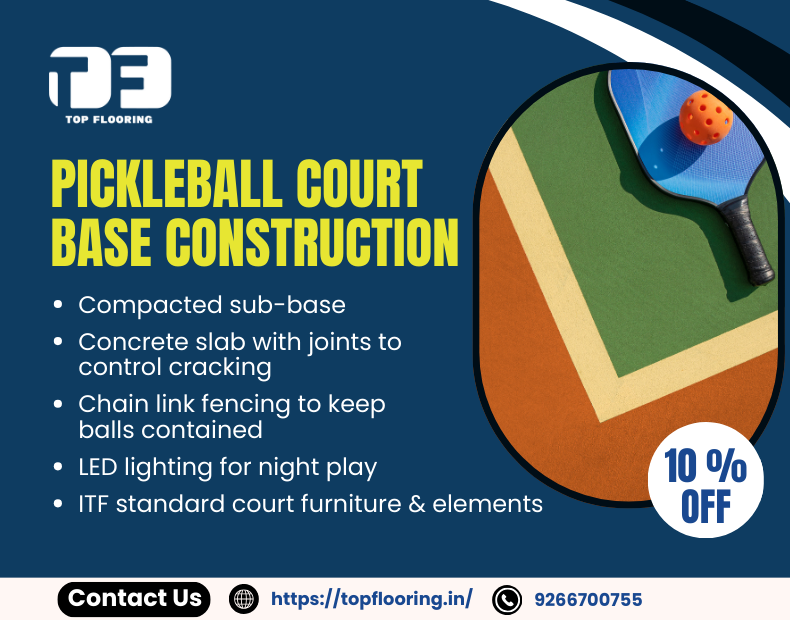
Maintenance Tips for Pickleball Courts in Delhi
In Delhi where the weather can be harsh on outdoor surfaces. Regular care is key to protect your investment and keep your pickleball court floor safe, vibrant and high-grip. Following a structured maintenance plan will not only ensure good play. But also reduce the long term cost of pickleball court construction by avoiding premature resurfacing or base damage. Here’s how to maintain your pickleball flooring:
Daily Sweeping to Remove Dust and Debris
Delhi’s dry climate, construction activity and heavy vehicle pollution produces fine dust particles that settle on open surfaces. This creates a slippery film that reduces traction and can make players slip.
Monthly Washing with Mild Detergent
Even with daily sweeping, dust and dirt can accumulate over time, especially after dewy winter mornings or the first monsoon showers. Washing the pickleball floor monthly with a mild, non-acidic detergent and soft-bristle brushes removes the invisible layer of dirt.
Edge Cleaning Around Fences and Corners
A weekly cleaning of edges and corners prevents water pooling that can weaken your pickleball court base. It also stops organic matter from staining your pickleball court floor and degrading the surrounding fencing structure over time.
Annual Inspections for Cracks and Joints
Even the best built pickleball courts experience minor shrinkage cracks or joint separations as temperatures fluctuate from 3°C in winter to 48°C in summer. If left untreated, these can expand under moisture and footfall and eventually damage the entire pickleball court construction.
Resurfacing Every 4–6 Years
All pickleball court builders recommend resurfacing every 4–6 years depending on usage. Over time, foot traffic, UV rays and Delhi’s harsh weather wears down the texture and color of your pickleball court surface material.
By following these maintenance tips, you’ll protect the performance, safety and aesthetics of your court for years. More importantly, you’ll prevent small issues from becoming big repairs keeping your overall pickleball court build cost low and ensuring uninterrupted play all year round.
Top Flooring — Delhi’s Best Pickleball Court Builders
Top Flooring is one of India’s leading pickleball court construction companies, providing pickleball court material and turnkey projects in Delhi and NCR. With 14+ years of experience in sports infrastructure, the company has become a trusted name among schools, housing societies, sports clubs, academies and hospitality venues looking to invest in high-performance, long-lasting courts.
As expert pickleball court builders, Top Flooring uses ITF-certified multi-layer acrylic systems designed to withstand Delhi’s hot summers, heavy monsoons and year-round dust. Every project is engineered for safety, durability and playability from the concrete base to the final line markings. Whether it’s building a home pickleball court on a rooftop or installing tournament-grade facilities for large complexes, Top Flooring ensures precision at every stage.
What sets Top Flooring apart is its end-to-end approach to pickleball court installation. The in-house team handles site planning, base preparation, drainage design, surface application, fencing, lighting and accessories. So clients don’t have to coordinate multiple vendors. Their commitment to quality and service has made them a go-to pickleball court installer for projects in Delhi, Gurugram, Noida, Ghaziabad and Faridabad.
With a strong network of trained dealers and on-ground execution teams. Top Flooring ensures timely delivery, competitive pickleball court build cost and long-term support for maintenance and resurfacing. Every court they build reflects their goal to create vibrant, safe and professional-grade sports surfaces. That helps communities embrace the growing sport of pickleball.
Costs and Budgeting Of Pickleball Court Flooring in Delhi
The cost of pickleball court construction in Delhi can vary depending on the type of base work. Choice of pickleball court material and additional infrastructure like fencing or lighting. Investing wisely at this stage ensures a safe, long-lasting playing surface and reduces long-term maintenance costs. Here’s what typical pricing ranges include:
- Concrete base with acrylic surface: This is the most durable and widely preferred option for permanent courts. The price includes soil compaction, RCC base casting, joint cutting, waterproofing and a complete multi-layer acrylic pickleball court flooring system.
- Concrete base + PP tiles: Permanent base with semi-permanent modular tile surfacing. Concrete slab provides structural stability and interlocking PP tiles provide a quick-install pickleball floor.
- Roll-out overlays on existing base: Roll-out systems are portable mats installed over any smooth, level base. This is a cost-effective option for seasonal tournaments, corporate leagues or trial courts before committing to permanent pickleball court installation.
- Additional infrastructure and amenities: Beyond the pickleball surface, budgeting should include lighting systems (200–300+ lux for safe evening play), 10–12 ft chain-link fencing, net posts, center straps, benches, umpire chairs and precise line marking.
Since every site has unique ground conditions, space constraints and design goals. Always ask your pickleball court installer for a complete BOQ (Bill of Quantities). This ensures clarity on each cost element and prevents hidden costs from popping up mid-project.
Conclusion
Building a pickleball court in Delhi is about creating a safe, high-performance space that can withstand the city’s extreme weather and years of play. Choosing the right pickleball court flooring in Delhi and durable pickleball court material ensures consistent bounce, good grip and color even under the scorching sun and heavy monsoons. Whether you are planning to build a home pickleball court on your rooftop or a full size court for a school, club or housing society. Working with experienced pickleball court builders is very important. A good pickleball court installer will guide you on base preparation, drainage design, pickleball court surface material selection and proper pickleball court installation techniques to get the most out of your investment.
While the cost of pickleball court construction may vary, every rupee spent on good engineering will pay off in reduced repairs, easy maintenance and better player experience. By prioritizing durable surfaces and skilled installation you can build a court that becomes a long term asset for your community and a hub for this growing sport.
Frequently Asked Questions
Full pickleball court construction takes 2–3 weeks depending on curing times and weather. Modular tiles or roll-outs can be ready in 3–5 days.
Yes, acrylic offers better bounce, grip, and UV resistance. PP tiles are great for rooftops or temporary builds but have shorter lifespans under Delhi’s sun.
Absolutely. Many homeowners are building a home pickleball court in backyards or rooftops. Choose acrylic for durability or PP tiles for flexibility.
With proper care, an acrylic pickleball court floor lasts 4–7 years and only needs resurfacing, not full reconstruction.

